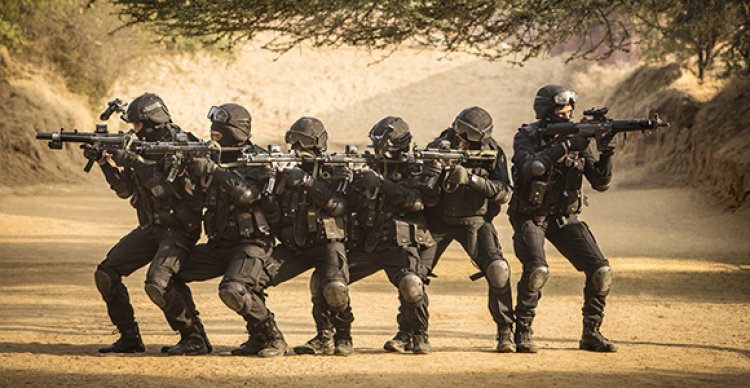National Security: Implies Handling Internal and External Threats Simultaneously
Asia News Agency

Addressing the 73rd batch of IPS probationers in Hyderabad last week, the National Security Advisor, Ajit Doval, stated, “Wars have ceased to become an effective instrument for achieving political or military objectives. They are too expensive and unaffordable and at the same time, there is uncertainty about their outcome. But it is the civil society that can be subverted, that can be divided, that can be manipulated to hurt the interest of a nation.”
National security hence, writes Harsha Kakar (retired Major-General of the Army) “would imply handling internal and external threats simultaneously, with security agencies operating in cohesion, rather than in isolation as is being projected……..
“Internal turmoil and a divided society impact development in the same manner as external threats. Hence, a secure nation implies its institutions and ideals are not compromised. The losses the nation suffered from agitations over the last few years enforces this fact.” For example, an article in January 2021 in the Economic Times stated that the farmers’ agitation caused a loss of over Rs 50,000 crore. Another article in the same newspaper stated that Assam lost over Rs 1000 crore in two months, in the tourism sector alone, due to the anti-CAA agitation in the state.”
Role and strategy of Pakistan and China
There have been multiple occasions, writes Kakar “when Pakistan has attempted to generate incidents leading to sectarian violence thereby dividing Indian society. Simultaneously, strong armed forces are essential for keeping inimical nations at bay…….
“India faces two hostile neighbours, China and Pakistan, both of whom would seek to exploit weakness in Indian defence preparedness, while backing anti-national groups within, damaging national cohesion. Pakistan has been backing terrorist groups which operate in Kashmir, while China supports some NE insurgencies. The redeployment of troops from counterinsurgency to the LAC has led to a slow resurgence of militancy in the NE. Terrorist groups behind the recent ambush targeting the Commanding Officer of 46 Assam Rifles and his family are most likely funded by China.”
The Editor-in-chief of the Global Times, Hu Xijin, had stated in a recent tweet, “They (India) must know that we could support separatist forces in NE India.” The intention of both adversaries, emphasises Kakar “is to compel India to expend resources containing terrorist groups as also break the national fabric.”
China’s strategy “is salami slicing, supporting secessionist movements and information warfare in times of peace with emphasis on non-contact warfare during hostilities, as it seeks to avoid challenging experienced and battle-hardened Indian forces in conventional operations. Pakistan lacks the capability to directly target India and therefore supports terrorism while enhancing a religious divide within.
“If India has to handle this multitude of threats, then it needs to have its security agencies working in close unison. This coordination falls squarely on the National Security Council (NSC).”
The cabinet secretariat resolution of 16 April 1999, which created the NSC, stated, “The Central Government recognizes that national security management requires integrated thinking and coordinated application of the political, military, diplomatic, scientific and technological resources of the state to protect and promote national security goals and objectives. National security in the context of the nation, needs to be viewed not only in military terms but also in terms of internal security, economic security, technological strength, and foreign policy.”
Kakar suggests “the NSC must be re-constituted with representatives of all elements of power, rather than be dominated by one service. Further, internal and external threats should never be considered in isolation. Both are equally damaging and mutually interdependent……”
















